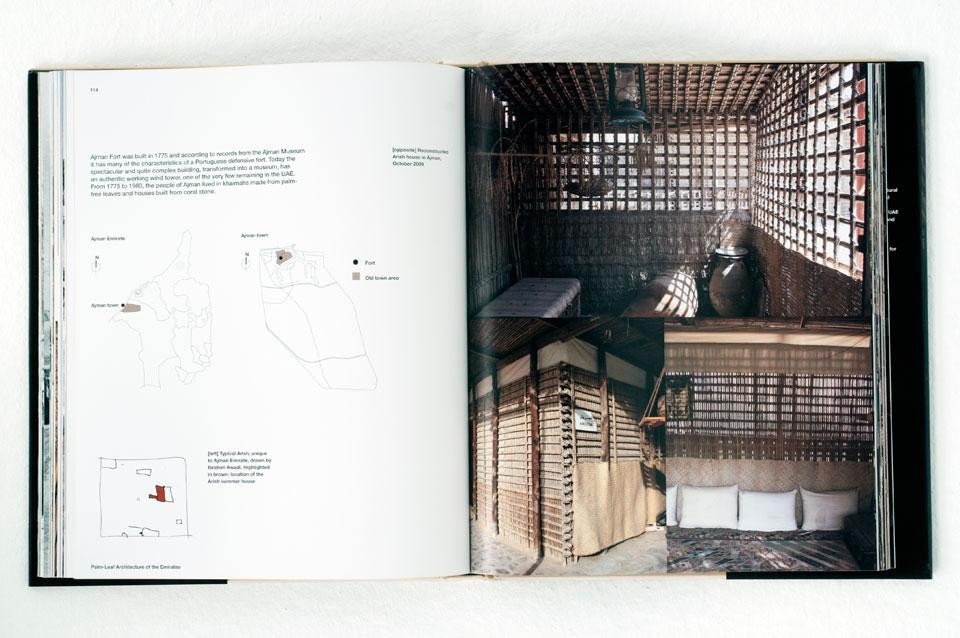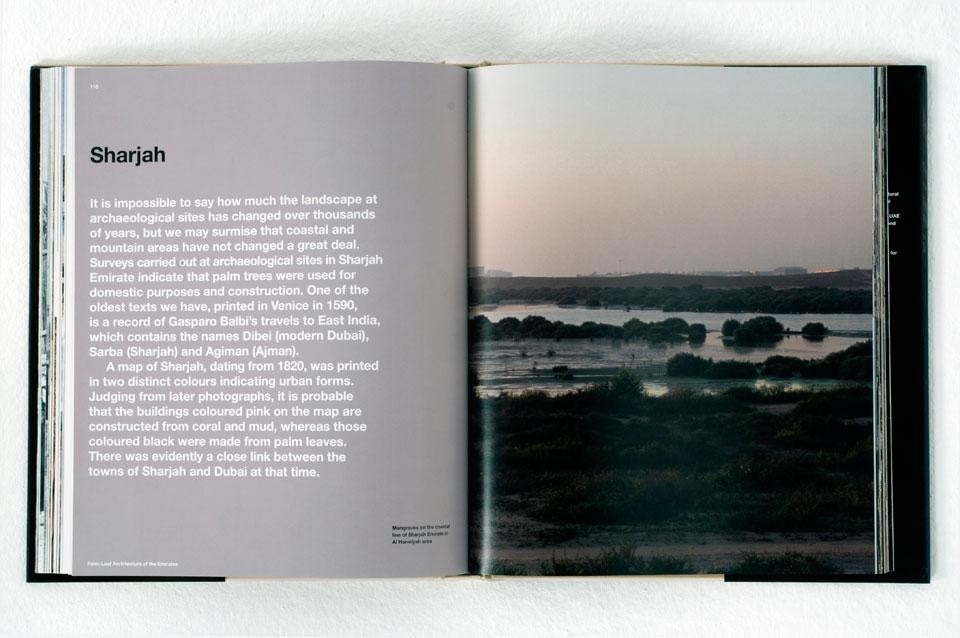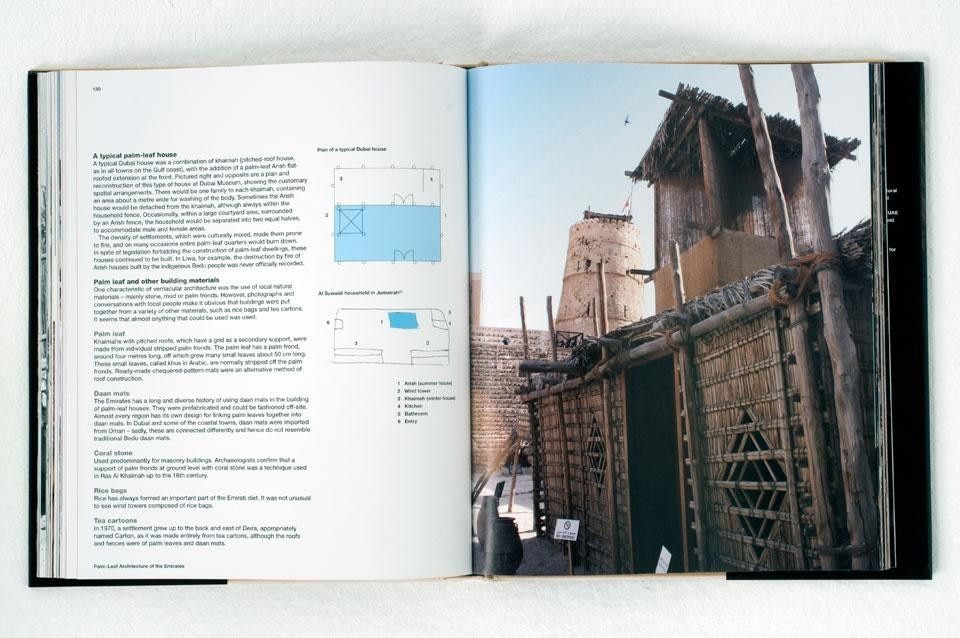Arish: Palm-Leaf Architecture is a beautiful book. Published by Thames & Hudson on the occasion of the 40th anniversary of the National Day of the United Arab Emirates, the book focuses on the use of palm leaves in the region's architecture; Arish is the traditional summer dwelling in the Emirates built with the palm-leaf technique. The result of a unique exhibition curated by Sandra Piesk at London's Royal Geographical Society last May, the volume uses this endangered practice to trace the history of the Middle Eastern settlement over the course of thousands of years.
The importance of the subject is undeniable. Recent carbon-14 archaeological studies have found that the first settlements using the palm-leaf technique date back as far as 7,000 years. Arish has thus been fundamental to the Arab housing culture since the dawn of civilization. It is extremely interesting to note that the tradition still endures notwithstanding its great risk of extinction. In fact, the book seeks to capture "the last moments of the tangible Arish legacy before its disappearance." But its outlook is confident. There is still a decade or two to go before the last memory of this tradition fades away forever along with those who preserve it.
The book's first section presents a rich collection of historic photographs, testimony to an interesting Arab-British project revealing Arish presence in various Arab settlements between 1925 and 1960. Among the sources: English explorer Wilfred Thesinger's work between 1945 and 1950 during his quest for black gold for BP, now housed at the Pitt Museum at the University of Oxford; the BP archives at the University of Warwick; the Abu Dhabi Company for Onshore Oil Operations (ADCO); and many private collections, such as that of Dr. Sultan Al Qassimi at the Centre of Gulf Studies at Sharja, or belonging to other researchers like Dr. Anne Coles.
An extensive collection of photographs is then devoted to construction details, again subdivided according to geographical location. Beyond technical-scientific interest in the documented construction methods, the collection's aesthetic power is unquestionable. Between the repetition of slender trunks and the exception of the always-original details, texture is the underlying canon of this visual culture rich in ideas of all kinds, and largely unknown in Europe.
The book places great emphasis on the importance of the recovery of Arish as an identity-related measure of both the deeply rooted and sophisticated Islamic culture as well as the role that traditional techniques play in broader research on sustainability in architecture

With nearly 300 illustrations (mostly in colour), Arish: Palm Leaf Architecture is the result of highly valuable scientific research, with an unmistakable aesthetic quality. Rossella Ferorelli (@R_Ferorelli)




